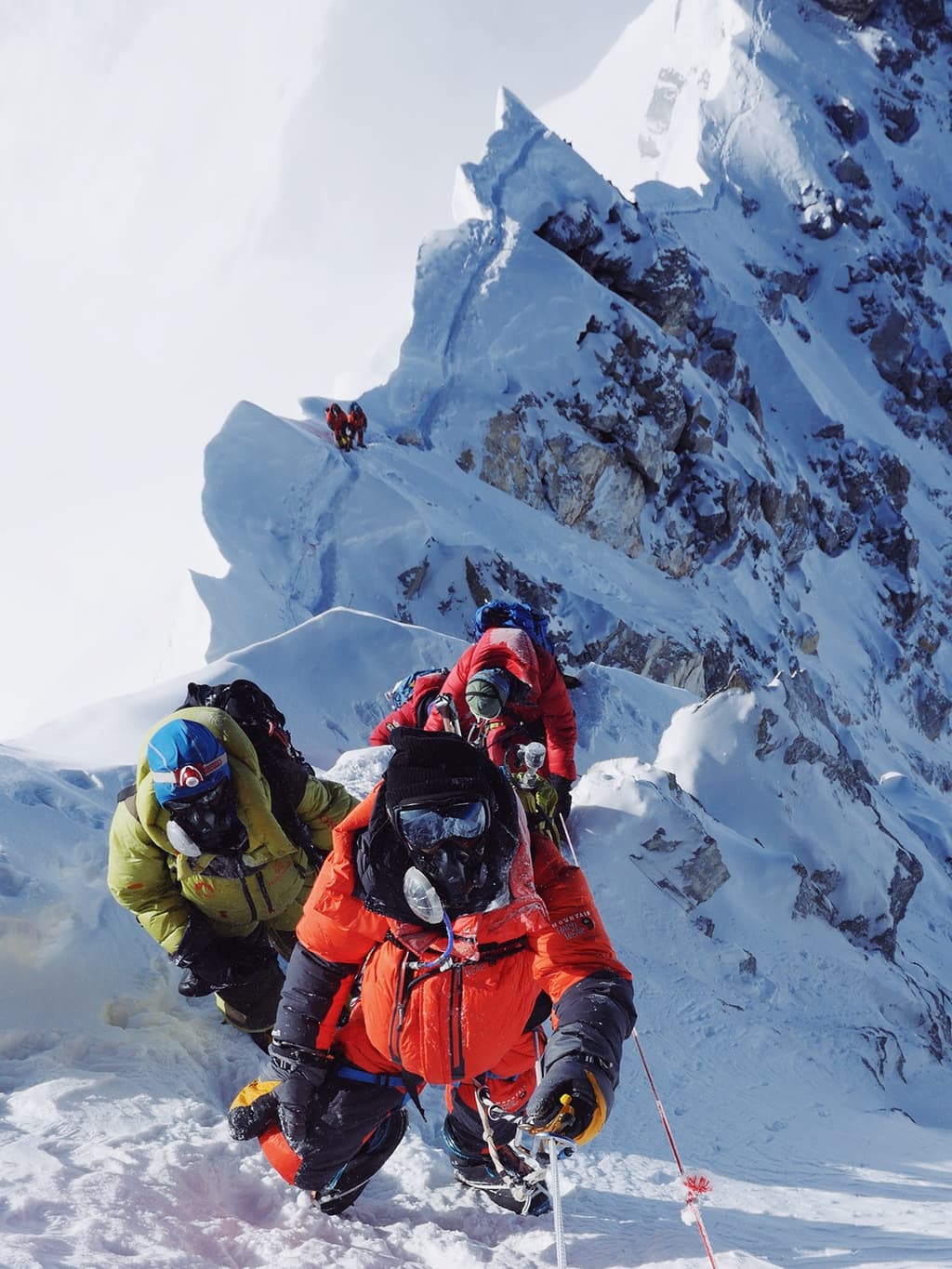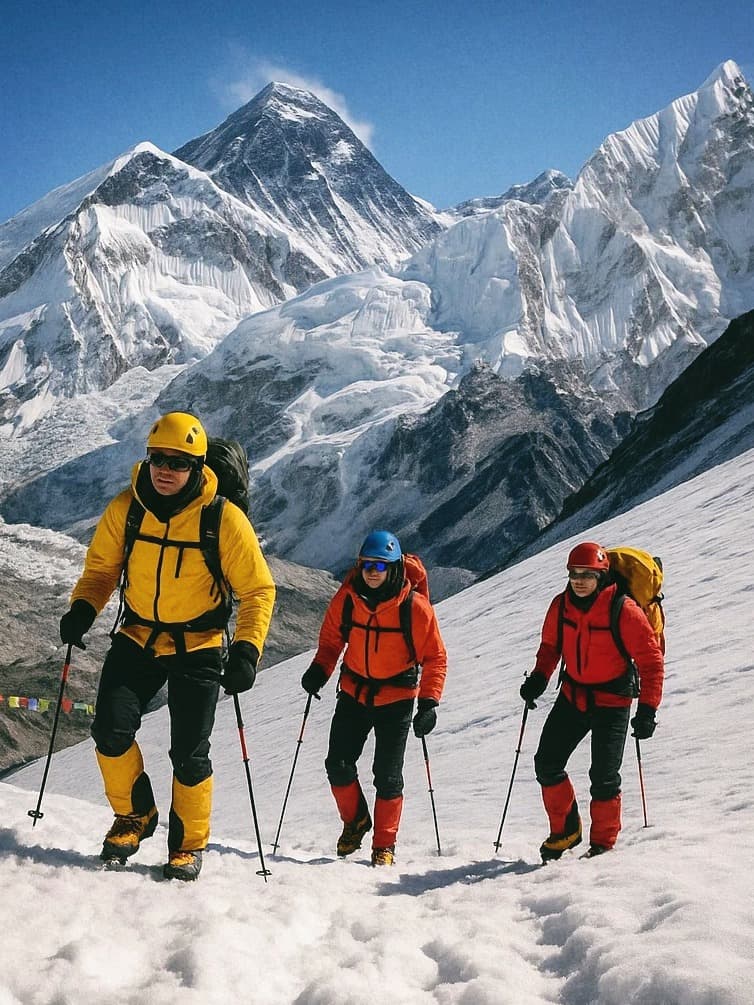Ever wondered what it feels like to stand above 6,000 meters, where the air thins and the world stretches endlessly below you? Nepal's 6000m peaks offer this exact thrill, without the extreme challenges of their 8000m big brothers.

These magnificent mountains are the perfect sweet spot for ambitious climbers looking to level up from trekking but aren't quite ready for Everest. Nepal's 6000m peaks blend technical climbing with breathtaking beauty, offering experiences that push your limits while remaining achievable with proper preparation.
What makes these climbs so special isn't just reaching the summit—it's how the journey transforms you. The question is: which of Nepal's majestic 6000m peaks matches your climbing style and ambitions? The answer might surprise you.
Understanding 6000m Peaks in Nepal
What defines a 6000m peak
A 6000m peak is exactly what it sounds like - a mountain that stands at least 6,000 meters (19,685 feet) above sea level. In Nepal, these giants form a critical middle ground in the Himalayan hierarchy. We classify these mountains based on precise altimeter readings, GPS data, and official surveys conducted by Nepal's government.
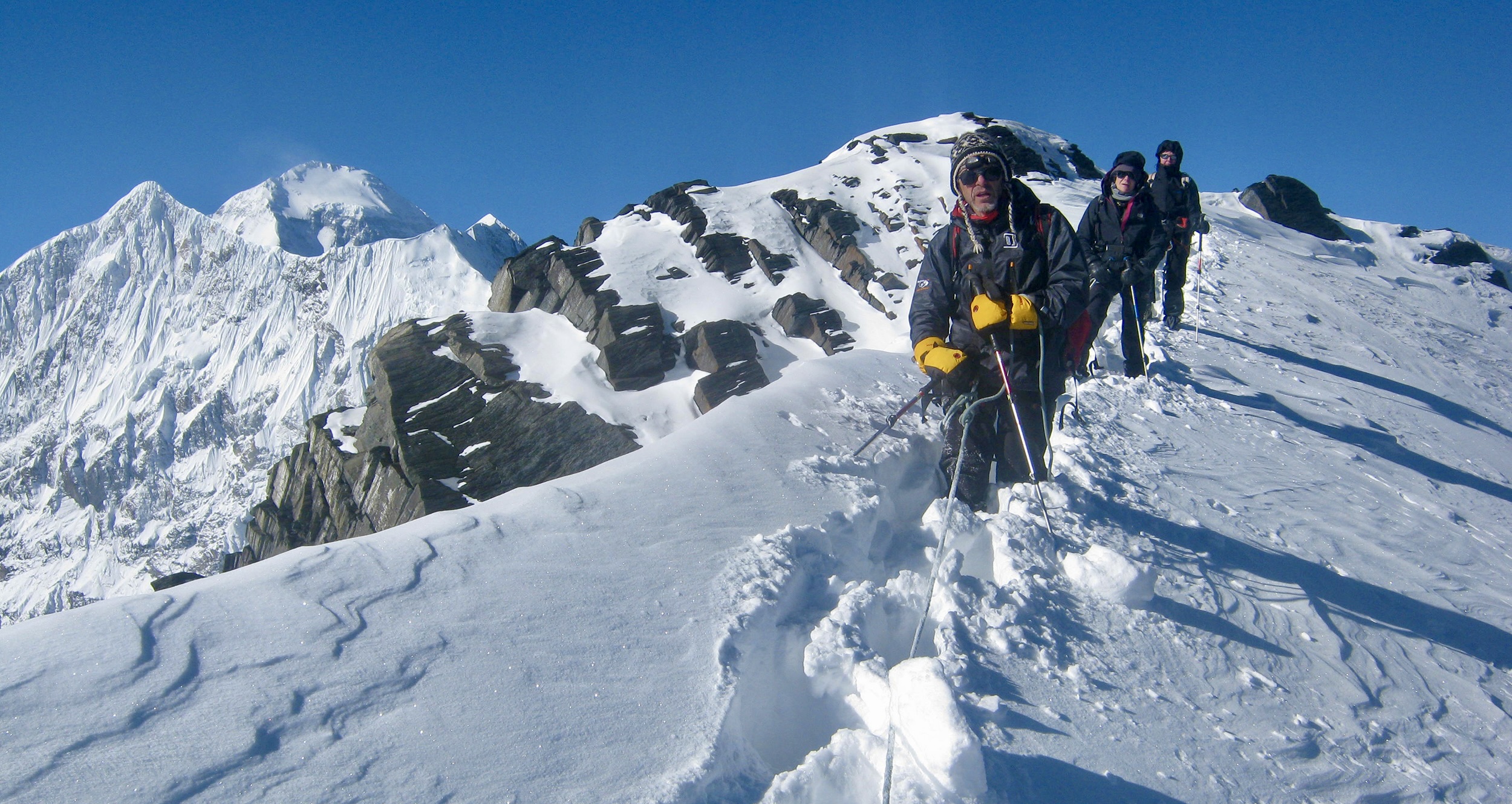
For climbers, these peaks represent a serious challenge that demands respect. They're not just big hills - at these altitudes, the oxygen level drops to roughly 50% of what you'd find at sea level. Our bodies feel every meter of that elevation!
Geographical distribution across Nepal
Nepal's 6000m peaks aren't evenly scattered across the country. They cluster primarily along the northern border with Tibet, forming part of the magnificent Himalayan range. We've identified several key regions where these mountains dominate:
- Khumbu Region: Home to Everest, but also featuring numerous 6000m peaks like Island Peak (6,189m)
- Annapurna Region: Contains challenging 6000m climbs, including Pisang Peak (6,091m)
- Langtang Valley: Features Yala Peak (6,111m) and others
- Rolwaling Valley: Less traveled but packed with 6000m options
- Makalu-Barun Area: Shadow of Makalu with several 6000m neighbors
These peaks create natural boundaries between Nepal's diverse geographical zones and serve as watersheds for major river systems.
Why these peaks deserve attention
The 6000ers have lived in the shadow of their taller siblings for too long! We believe these mountains offer the perfect balance of challenge and accessibility. For serious mountaineers, they provide ideal training grounds before attempting 8000m peaks.
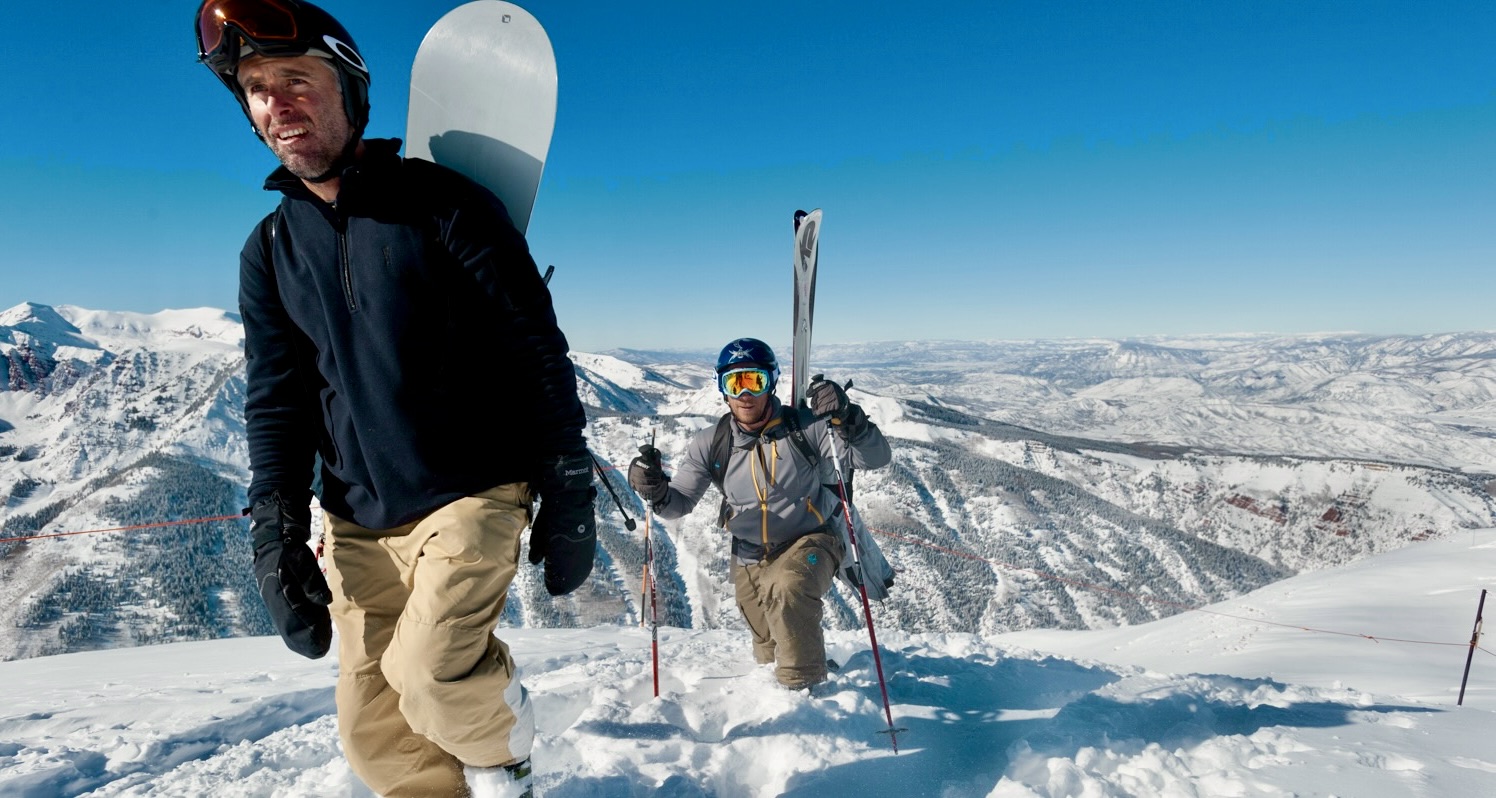
What makes them special? Their technical diversity is unmatched. Some require advanced ice climbing skills, while others test your rock climbing abilities. And the crowds? Practically non-existent compared to the famous 8000ers.
The views from these summits are often more spectacular than from higher peaks, where distant perspectives can be obscured by your own mountain's mass. From a 6000m summit, you're high enough to see the curve of the earth but close enough to appreciate the details of the valleys below.
Comparison to 8000m peaks
|
Aspect |
6000m Peaks |
8000m Peaks |
|
Permit Cost |
$350-$500 |
$5,000-$11,000 |
|
Oxygen Need |
Optional for most |
Essential for most |
|
Time Required |
10-18 days |
35-70 days |
|
Technical Difficulty |
Varies widely |
Extreme |
|
Death Zone |
No |
Yes (above 8000m) |
|
Summit Success Rate |
60-75% |
30-50% |
We've found that many climbers actually report more enjoyment on 6000m peaks. The shorter duration means less time away from home, less physical deterioration from extended time at altitude, and significantly lower costs. These mountains offer authentic Himalayan experiences without the extreme risks and commercial circus that sometimes surrounds the 8000ers.
The 6000ers represent the sweet spot of Himalayan mountaineering - challenging enough to demand respect, accessible enough to be achievable.
Top 6000m Peaks for Climbing Expeditions
Island Peak (6,189) - The perfect starter peak
We've seen countless climbers take their first steps into serious mountaineering on Island Peak. This magnificent mountain (also called Imja Tse) sits in the heart of the Everest region and offers the perfect introduction to Himalayan climbing. The route combines thrilling glacier travel, exciting ridge climbs, and a final headwall that requires basic ice climbing skills.
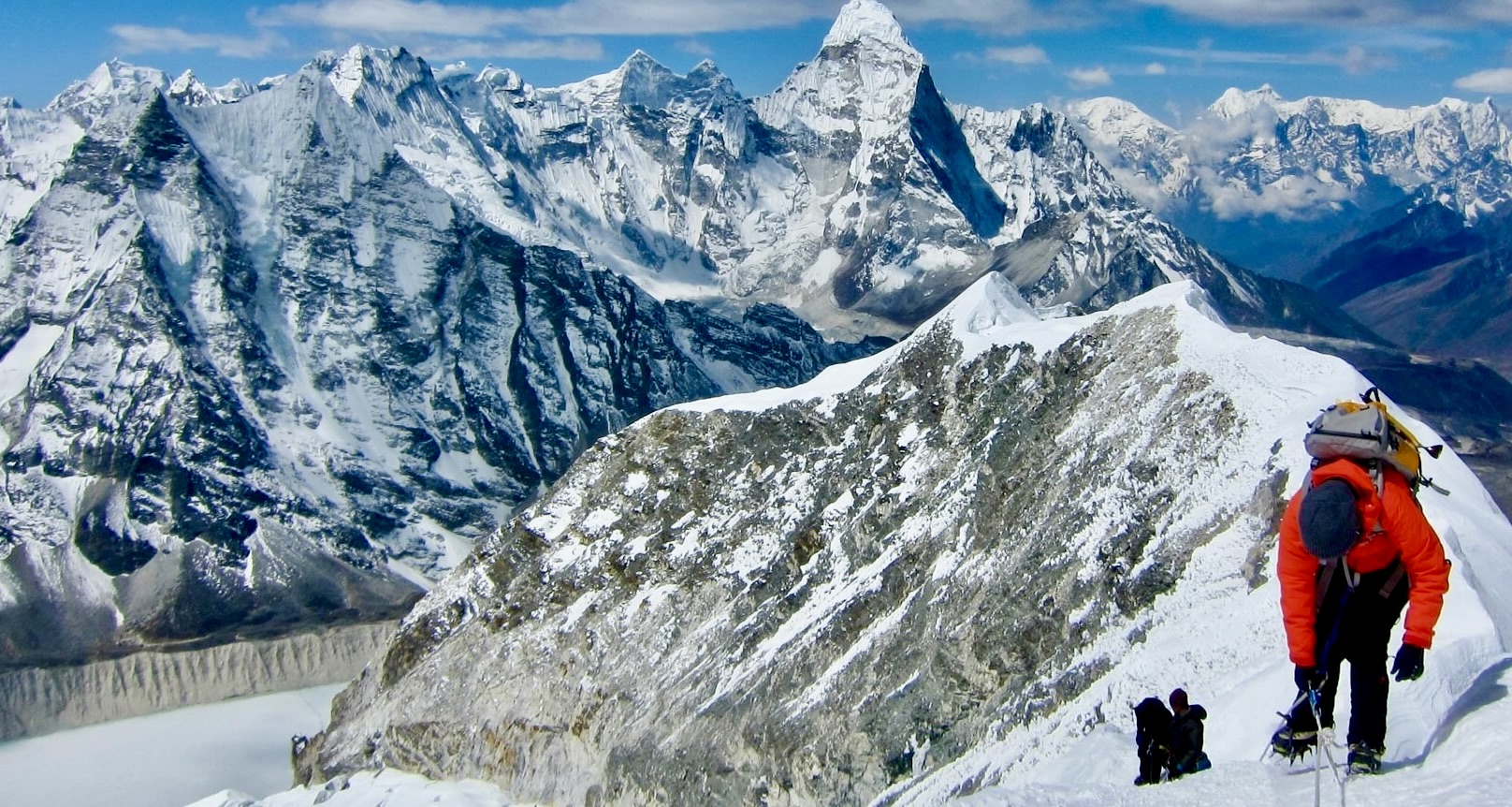
What makes Island Peak ideal for beginners? The technical sections are challenging enough to be exciting but not overwhelming. Plus, the peak's location gives you stunning views of Everest, Lhotse, and Makalu that'll have your Instagram followers green with envy.
Our expeditions typically take 2-3 weeks, including acclimatization treks through beautiful Sherpa villages like Namche Bazaar and Dingboche. Trust us, those extra days make all the difference in your summit success.
Mera Peak (6,476m) - The Highest trekking peak in Nepal
Got a few treks under your belt and ready for something bigger? Mera Peak is calling your name. As Nepal's highest trekking peak, it offers serious bragging rights without requiring advanced technical climbing skills.
The approach alone is worth the journey - we'll take you through the remote Hinku Valley, far from the crowded Everest Base Camp trails. Here, traditional villages and untouched forests give you a glimpse of Nepal that few travelers ever see.

From the summit, you'll enjoy what might be the finest mountain panorama on earth. Five 8,000m peaks are visible: Everest, Lhotse, Cho Oyu, Makalu, and Kangchenjunga. We've guided hundreds of climbers up Mera, and that moment of sunrise at the top never gets old.
Chulu West (6,419m) - Annapurna region's jewel
Want something different from the Everest region crowds? Chulu West in the Annapurna region is our go-to recommendation. This stunning peak combines moderate technical climbing with one of Nepal's most diverse trekking routes.
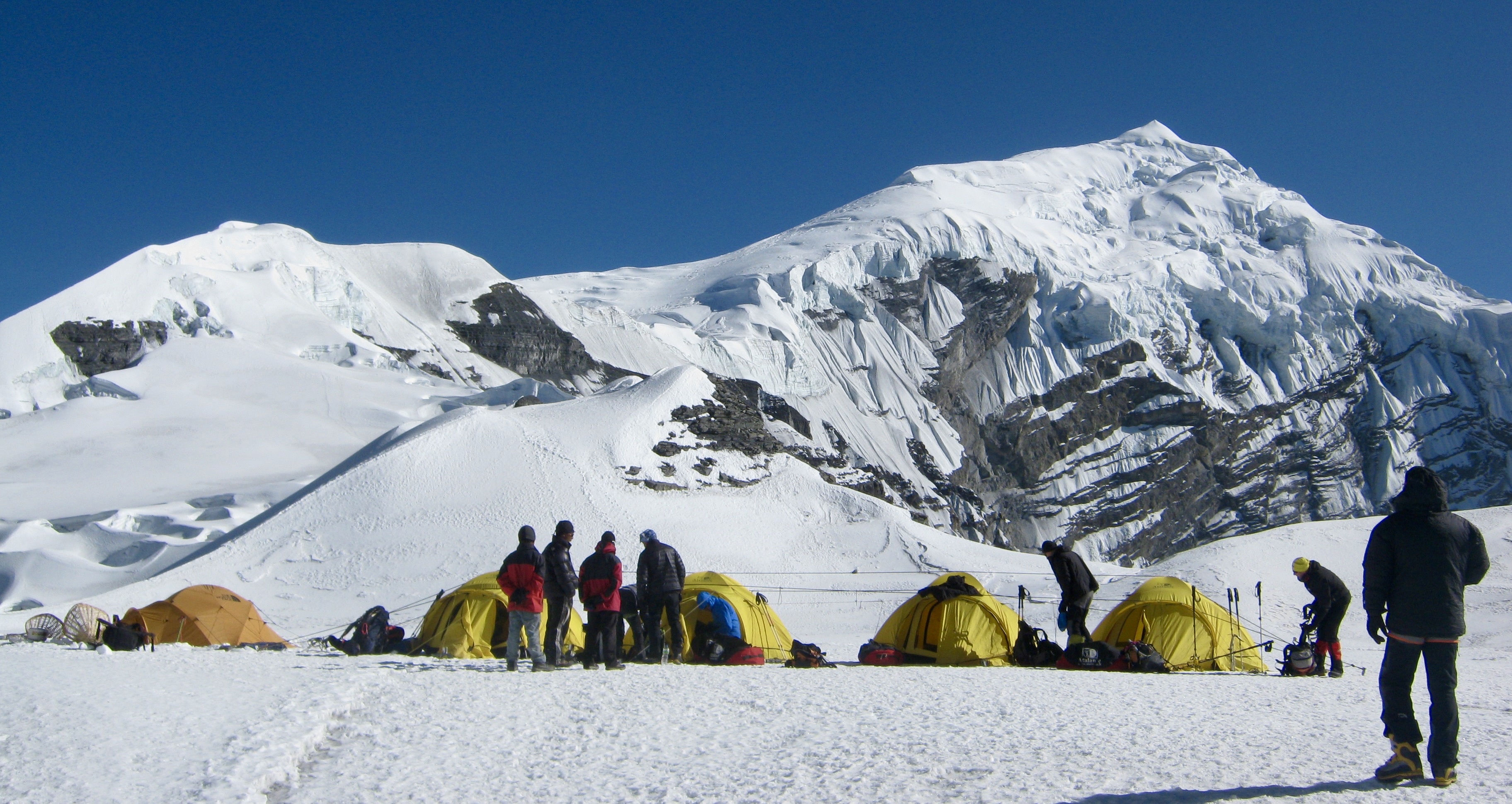
We love guiding Chulu West because the approach follows sections of the famous Annapurna Circuit, letting you experience dramatic changes in landscape and culture. From subtropical forests to high alpine terrain, the journey is as rewarding as the summit itself.
The climb requires good stamina and basic snow and ice skills. You'll navigate crevassed glaciers and steep snow slopes before a final ridge climb to the top. Your reward? Panoramic views of the entire Annapurna range, including Annapurna I, Dhaulagiri, and Tilicho Peak.
Lobuche East (6,119m) - The Everest region classic
Lobuche East has become one of our most popular expedition peaks, and for good reason. Its proximity to Everest Base Camp makes it perfect for climbers who want to combine iconic trekking with a significant summit achievement.
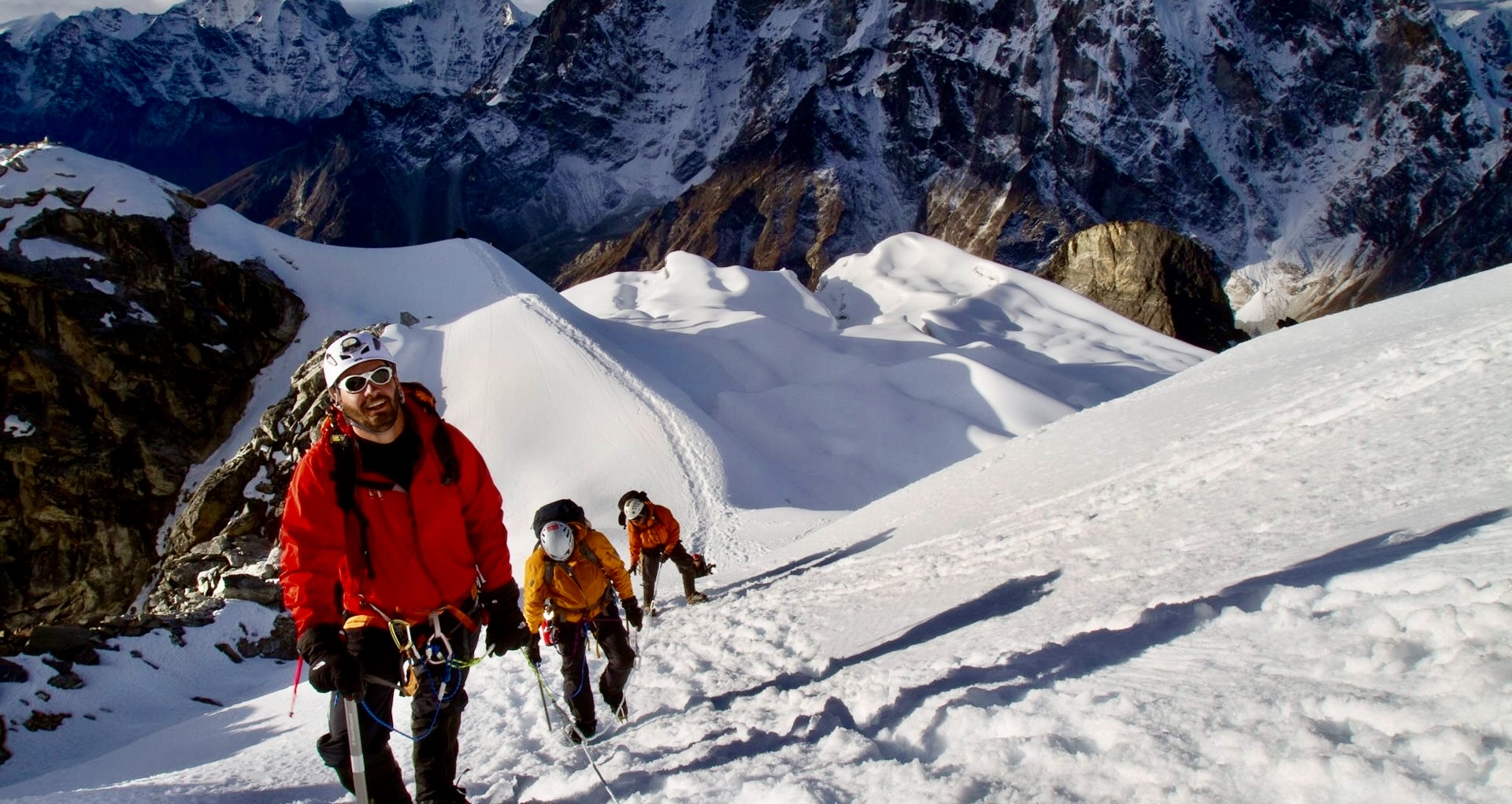
The peak offers more technical challenges than Island Peak, with sections of exposed ridge climbing and steep ice faces that'll test your skills. But don't worry - our experienced Sherpa guides make sure you're safe every step of the way.
We typically approach Lobuche after acclimatizing at Everest Base Camp, which gives you incredible bragging rights - "Yeah, I trekked to EBC and then climbed a 6,000m peak!" The summit views rival any in the Khumbu, with Everest, Nuptse, and Pumori creating a backdrop you'll never forget.
Pisang Peak (6,091m) - Lesser-known gem
Looking for a 6,000m peak without the crowds? Pisang Peak is our hidden treasure. Located in the Annapurna region near the village of Pisang, this mountain offers serious adventure without the traffic jams you might find on more famous peaks.
We love guiding climbers here because the route combines beautiful forest hiking, alpine meadows, and eventually glacier travel and moderate ice climbing. The western flank presents an exciting challenge with its steep snow and ice slopes.
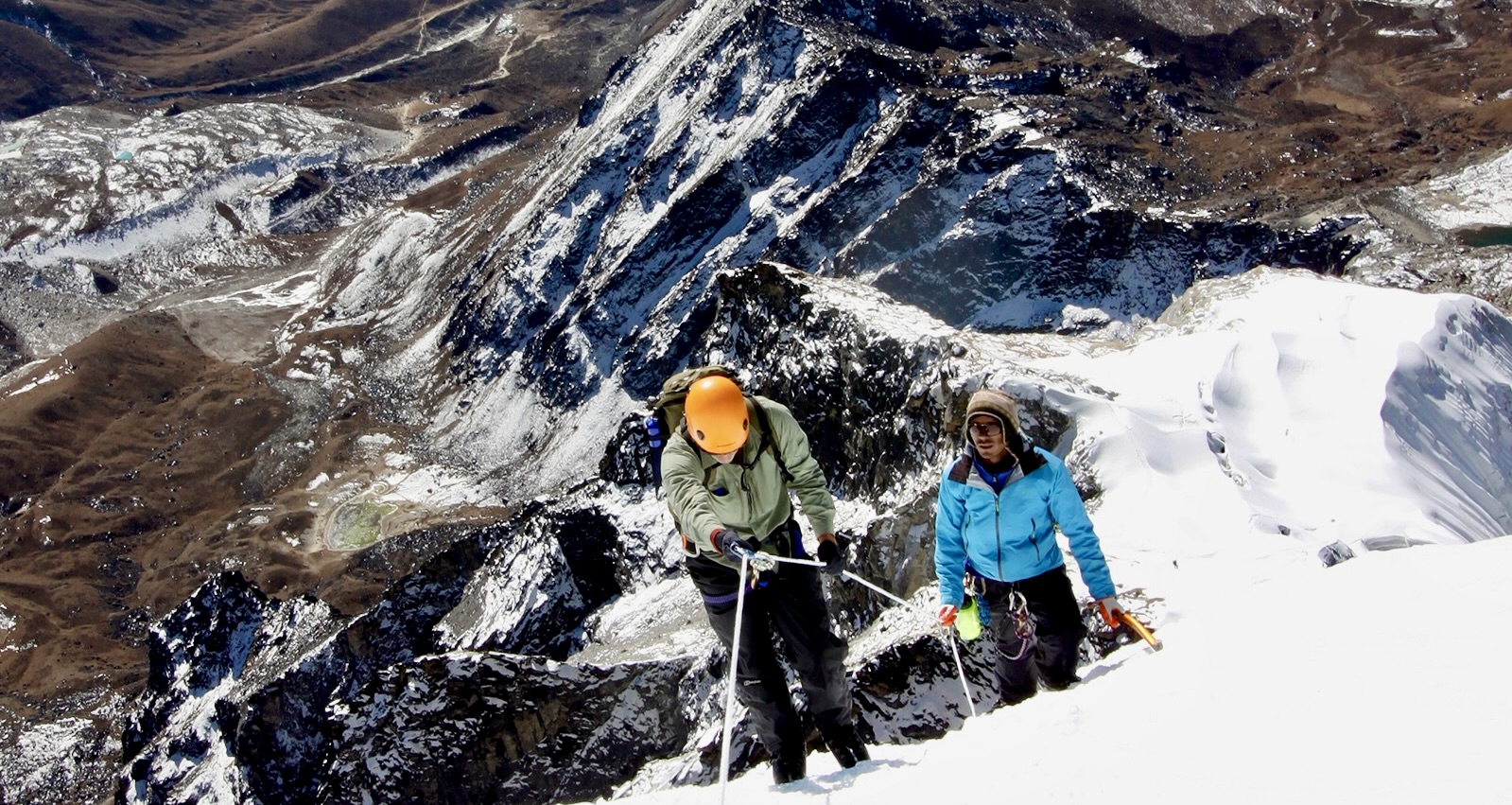
The peak's relatively quick approach makes it ideal if you're short on time but still want a legitimate Himalayan summit. And since you're in the Annapurna region, we can easily combine your climb with sections of the Annapurna Circuit or a side trip to beautiful Tilicho Lake.
Seasons and Weather Conditions
Pre-monsoon (Spring) climbing window
We always tell our climbers that timing is everything when tackling Nepal's 6000m peaks. Spring (March to May) offers the most reliable window for summit attempts. The days grow longer, temperatures rise, and those brutal winter winds finally calm down.
April and May stand out as prime climbing months. The mercury hovers between -10°C to -5°C at higher camps – cold but manageable with proper gear. We've guided hundreds of climbs during this season and love how stable the weather patterns become, especially in late April when the jet stream moves northward.
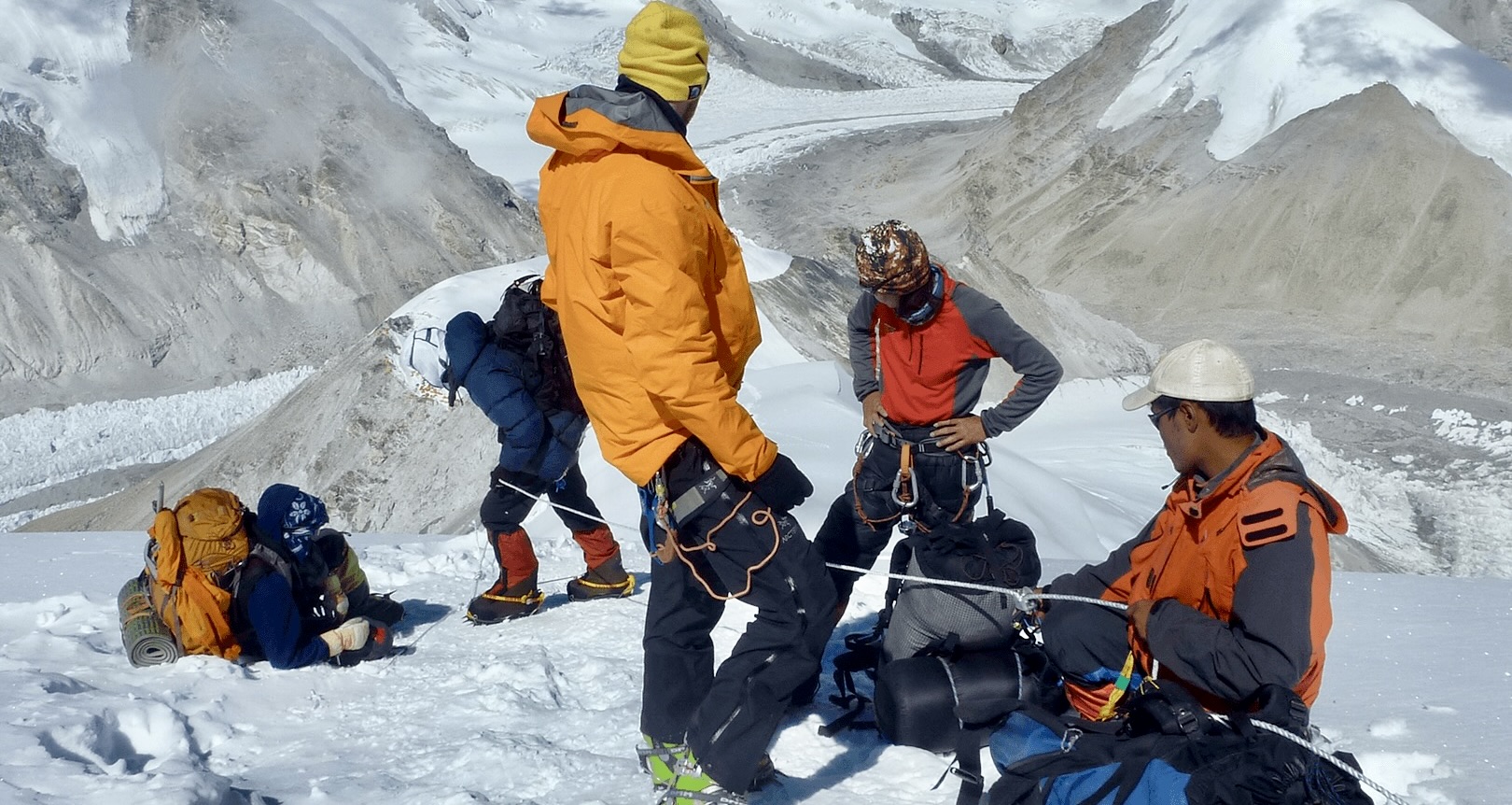
What makes spring special? The pre-monsoon period brings clearer mornings and spectacular visibility. The rhododendrons bloom across lower elevations, creating a stunning backdrop for your approach trek. Plus, the slightly higher oxygen levels compared to autumn make acclimatization a bit easier for most of our clients.
Post-monsoon (Autumn) opportunities
After the monsoon rains wash away, autumn (September to November) emerges as our second-favorite climbing season. The skies clear up magnificently, offering the crispest views you'll ever see of the Himalayan panorama.
October typically provides the sweet spot – stable weather, minimal precipitation, and temperatures only slightly colder than spring. We find the trails less crowded compared to the spring rush, giving our teams more flexibility with permits and accommodations.
The trade-off? Slightly shorter days and colder temperatures, especially as November approaches. The monsoon often leaves behind deeper snow at higher elevations, which means we sometimes need to break trail more often than in spring.
Winter climbing challenges and rewards
Winter expeditions aren't for the faint-hearted, but they offer something special for serious mountaineers. From December through February, we face the harshest conditions – temperatures plummeting to -20°C or lower, fierce winds, and shorter daylight hours.
The challenges are significant: frozen equipment, difficult route-finding in deep snow, and limited rescue options. We require much more extensive preparation for winter climbs, including specialized cold-weather gear and extra fuel.
But the rewards? Absolutely worth it for the right climber. The mountains stand pristine and empty. The crystal-clear winter air offers visibility that's simply unmatched. And there's that indescribable satisfaction of conquering a peak when nature throws its absolute hardest conditions at you.
Preparation for Your 6000m Peak Expedition
Physical Fitness Requirements
Climbing a 6000m peak in Nepal isn't a walk in the park. We've seen many aspiring climbers underestimate the physical demands, and trust us, it's better to be over-prepared than struggling at high altitude.
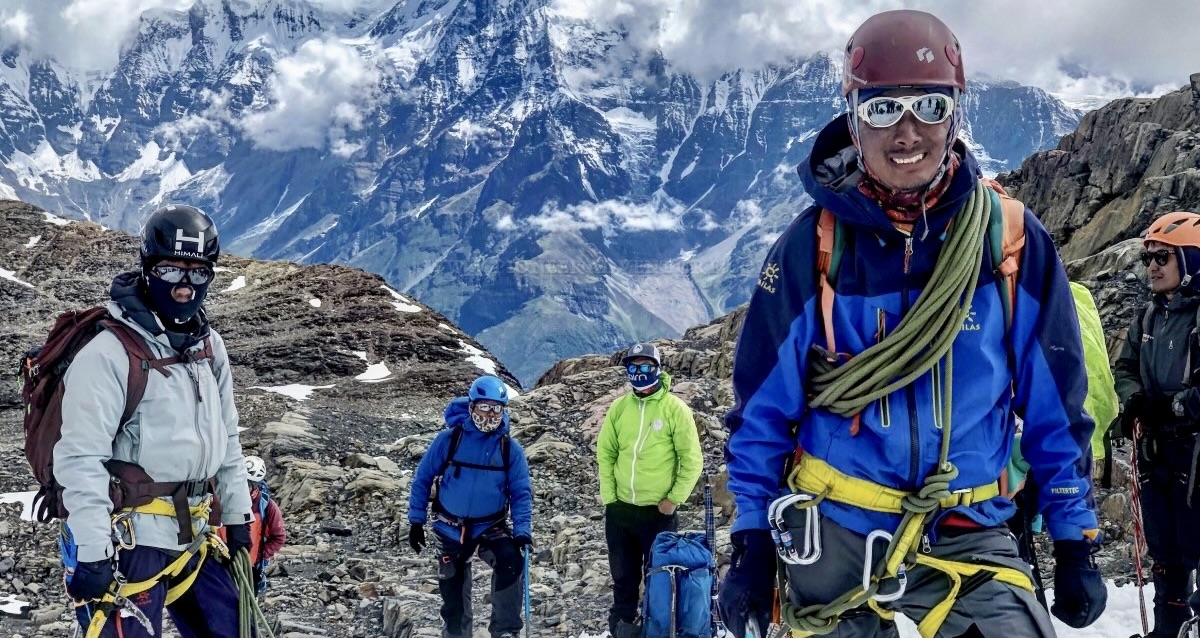
We recommend starting your training at least 4-6 months before your expedition. Focus on building cardiovascular endurance through activities like hiking with a loaded backpack, running, cycling, or swimming. Aim for 3-4 sessions weekly, gradually increasing duration and intensity.
Strength training is equally important. We emphasize core stability and lower body strength – your legs will thank you during those long ascent days! Include exercises like squats, lunges, step-ups, and planks in your routine.
Don't forget to incorporate some high-intensity interval training (HIIT) to simulate the short bursts of intense effort you'll need on the mountain.
Technical Skills Needed
You don't need to be a professional mountaineer, but we insist on some basic technical proficiency before attempting a 6000m peak:
- Crampon use: Walking efficiently and safely on varied snow and ice terrain
- Ice axe techniques: Self-arrest, step cutting, and proper walking position
- Rope skills: Tying basic knots, clipping into fixed lines, and basic belaying
- Jumar use: Ascending fixed ropes efficiently on steeper sections
We offer pre-expedition training courses in Kathmandu where we can polish these skills before heading to the mountains. Many clients find this invaluable, especially if they're a bit rusty.
Acclimatization Strategies
Proper acclimatization is non-negotiable on a 6000m expedition. We've developed our itineraries specifically to maximize your body's adaptation to altitude while maintaining safety.
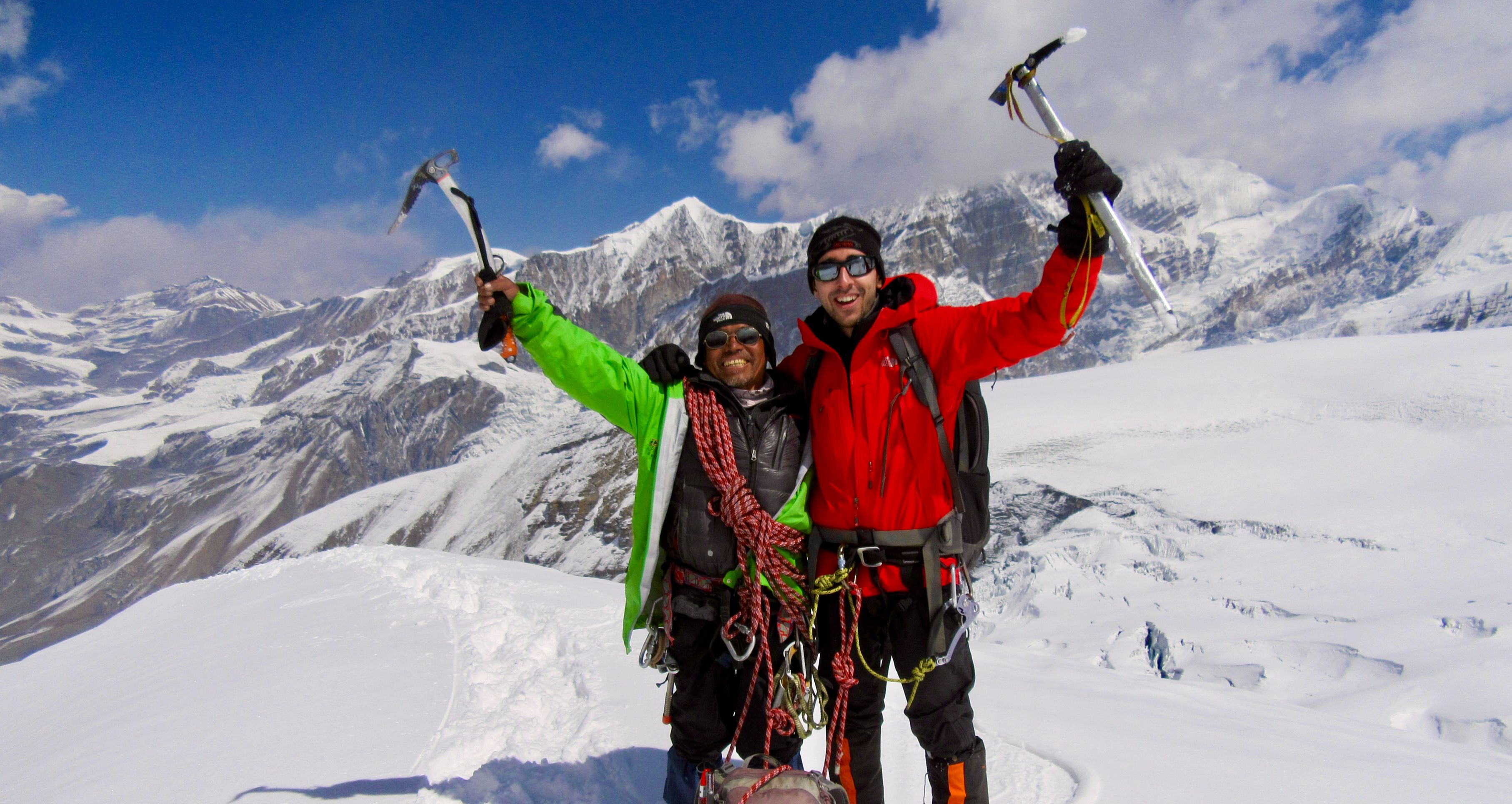
Our typical approach follows the "climb high, sleep low" principle. We gradually increase sleeping altitudes while taking day hikes to higher elevations. This gives your body time to produce more red blood cells and adjust to lower oxygen levels.
Some key strategies we implement:
- Controlled ascent rate (usually 300-500m elevation gain per day)
- Rest days every 2-3 days of climbing
- Proper hydration (4-5 liters daily)
- Avoiding alcohol and sleeping pills
- Monitoring for altitude sickness symptoms
We also carry emergency oxygen and medications, though with proper acclimatization, these rarely need to be used.
Essential Gear Checklist
Having the right equipment can make or break your expedition. We've refined this list over decades of guiding:
Technical Gear:
- Mountaineering boots (insulated, crampon-compatible)
- Crampons (12-point, adjustable)
- Ice axe (general mountaineering)
- Climbing harness
- Carabiners (3 locking, 3 non-locking)
- Jumar/ascender
- Helmet
- Headlamp with spare batteries
Clothing:
- Down suit or heavy down jacket
- Insulated pants
- Multiple insulating layers (fleece, synthetic)
- Waterproof/windproof shell (jacket and pants)
- Thermal base layers (2-3 sets)
- Expedition-weight mittens and lighter gloves
- Warm hat and sun hat
- Buff/neck gaiter
- Heavyweight mountaineering socks (3-4 pairs)
Personal Items:
- Sleeping bag (rated to at least -20°C)
- Sleeping pad (insulated)
- Sunglasses (100% UV protection, side shields)
- Sunscreen (SPF 50+) and lip balm
- Personal medications
- Water bottles (insulated) and water purification
- Trekking poles
We provide group equipment like tents, stoves, and cooking gear, but your personal items need careful consideration. Nothing worse than realizing you forgot something critical when you're already at base camp!
Everest Sherpa Expeditions' Specialized Services
Experienced Sherpa guides and their unique expertise
Our Sherpa guides aren't just professionals—they're living legends with climbing in their DNA. Born and raised in the high Himalayan villages, they've been navigating these mountains since childhood. Many of our team members have summited 8000m peaks multiple times, with several holding records for Everest ascents.
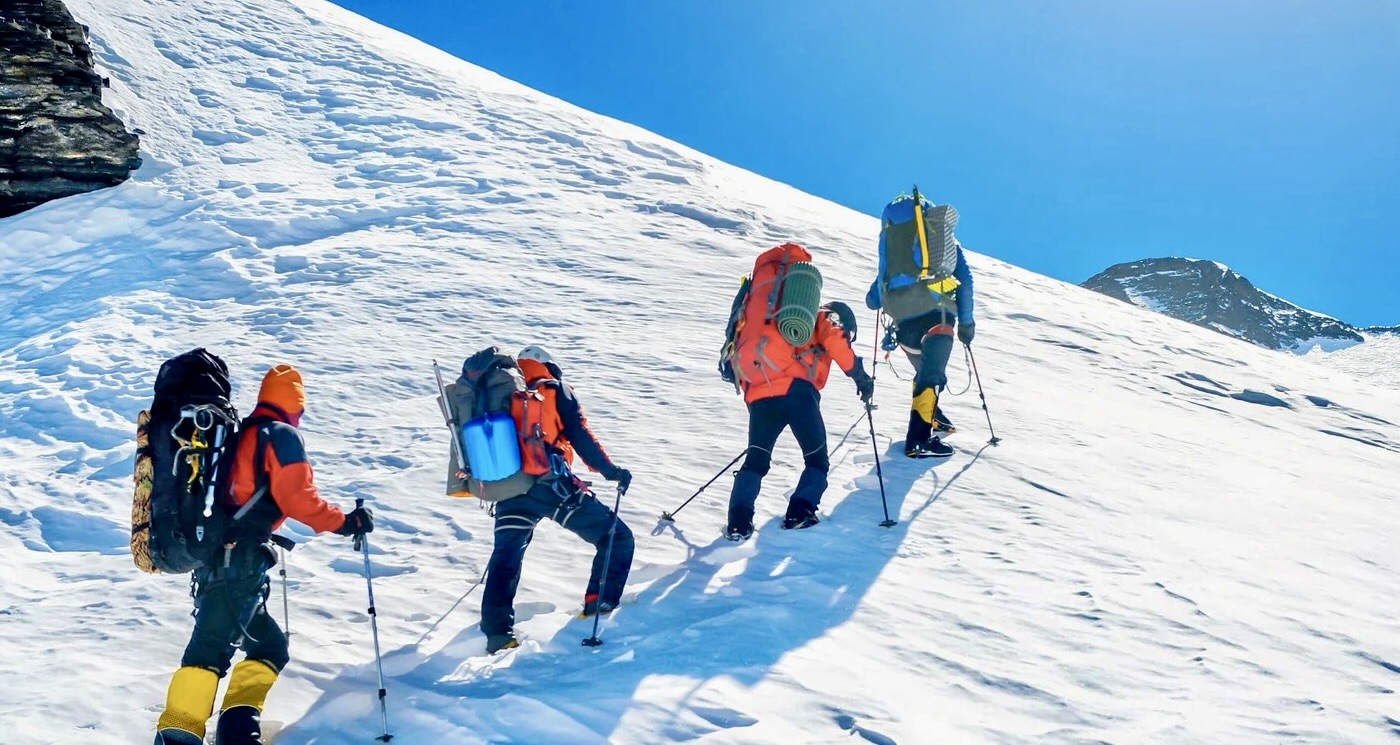
What makes our guides special? Their intimate knowledge of the mountains goes beyond technical skills. They understand the mountain's moods, weather patterns, and hidden dangers in ways no textbook can teach. This sixth sense for the mountains has saved countless lives over the years.
We're proud that our guides speak multiple languages and have advanced certification in high-altitude medicine, technical climbing, and rescue operations. When you climb with us, you're not just getting a guide—you're partnering with someone whose ancestors have respected and conquered these peaks for generations.
Custom expedition planning
No two climbers are the same, and neither should their expeditions be. We build every trip from the ground up based on your experience, fitness level, and personal goals.
Our planning process starts with an honest conversation about what you want to achieve. Whether it's your first 6000m peak or you're completing your collection, we tailor everything to fit your vision.
We handle all the complicated logistics—permits, transportation, accommodation, and equipment—while keeping you in the loop. Our team maps out detailed day-by-day itineraries with proper acclimatization schedules specifically designed for your target peak.
Want to combine your climb with cultural experiences? Need extra days for photography? Have dietary restrictions? Just say the word. The mountains aren't going anywhere, but your perfect expedition starts here with us.
Safety protocols and emergency procedures
The thrill of standing on a 6000m summit is incredible, but getting everyone home safely is our real mission. We've developed comprehensive safety systems based on decades of experience in the Himalayas.
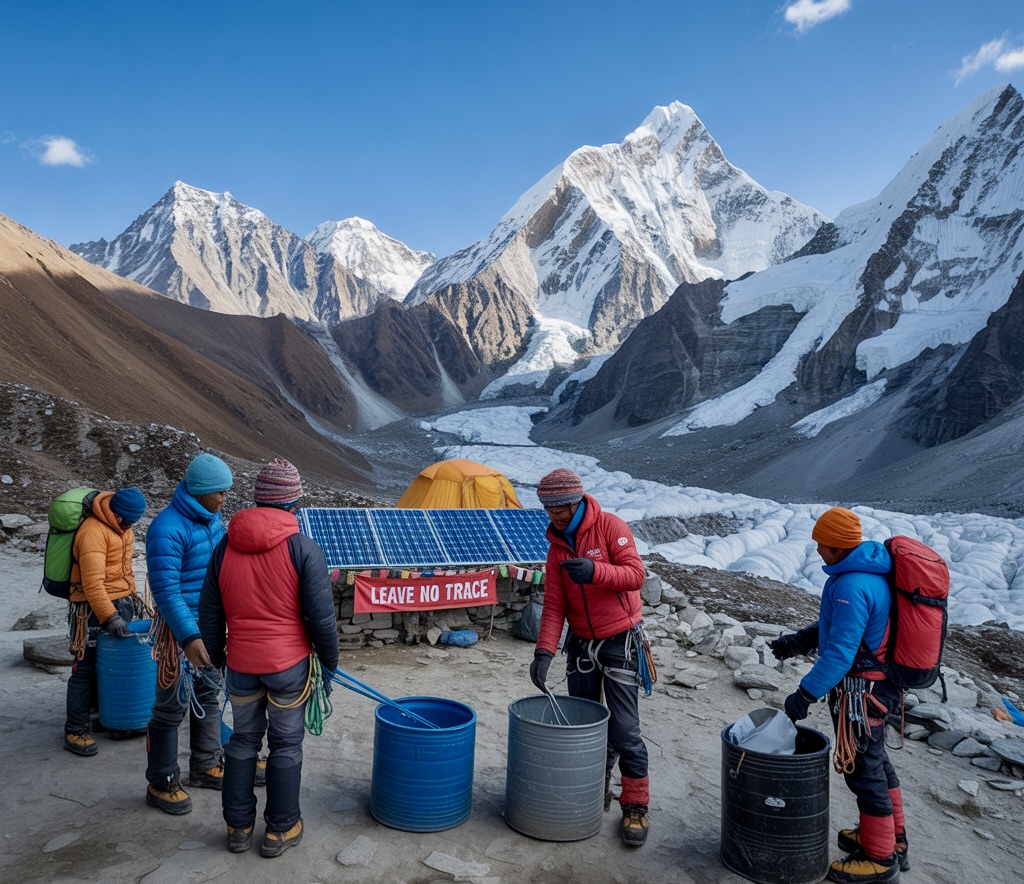
Our expeditions maintain lower client-to-guide ratios than industry standards. Every trip carries satellite phones, emergency oxygen, comprehensive medical kits, and evacuation equipment. We station extra supplies at strategic points along the route.
Before setting out, we conduct thorough briefings covering potential hazards and emergency protocols. Daily health checks monitor for signs of altitude sickness or other issues. Our guides are trained to make tough calls when necessary—sometimes the mountain says "not today," and we listen.
We maintain direct communication with helicopter rescue services and have established evacuation plans for each section of the route. In the mountains, preparation isn't just important—it's everything.
Sustainable and responsible climbing practices
The magnificent peaks of Nepal aren't just our business—they're our home and heritage. Every expedition we lead follows strict environmental practices that preserve these mountains for future generations.
We've eliminated single-use plastics from our expeditions and implemented a comprehensive waste management system that ensures we leave nothing behind. Our "carry in, carry out" policy extends to everything from food wrappers to human waste at high camps.
Beyond environmental concerns, we believe in fair treatment of our team members. Our porters and staff receive proper equipment, fair wages, insurance coverage, and regular training opportunities. Many of our support staff have been with us for decades.
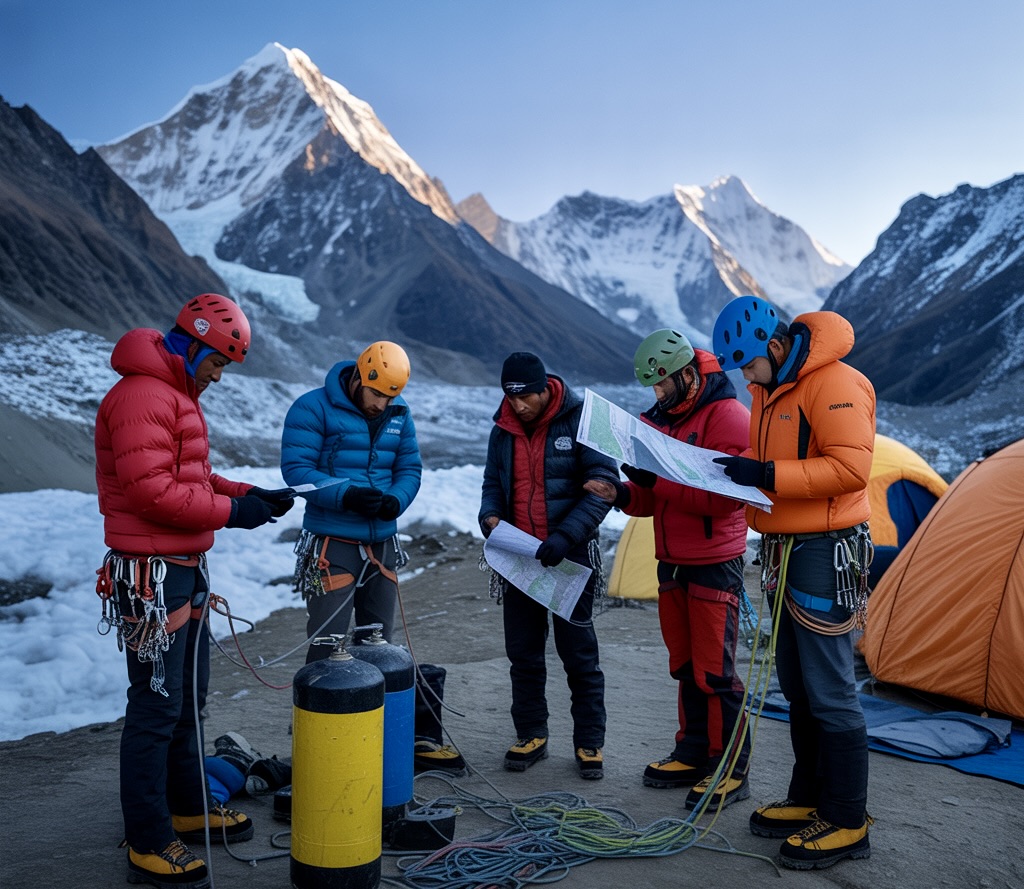
We actively participate in trail maintenance projects and contribute to local education programs in mountain communities. When you climb with us, part of your expedition cost directly supports these initiatives. Together, we're proving that world-class mountaineering and environmental responsibility can go hand in hand.
Permits and Logistics
Required climbing permits
Climbing a 6000m peak in Nepal isn't just about physical preparation—there's paperwork too. We handle all permit requirements to make your expedition smooth. For most 6000m peaks, you'll need:
- Climbing Permit: Obtained from the Nepal Mountaineering Association (NMA), costing $250-$500 per person depending on the peak and season
- TIMS Card (Trekkers' Information Management System): $10-$20 per person
- Conservation Area Permit: $30 for most regions where 6000m peaks are located
We've processed hundreds of permits and know exactly which documentation is needed for each peak. Some remote areas require additional special permits that we arrange well in advance.
Transportation arrangements
Getting to these magnificent mountains is half the adventure! We coordinate all transportation logistics from the moment you land in Kathmandu:
- Airport transfers in comfortable private vehicles
- Domestic flights to regional airports (Lukla, Pokhara, etc.)
- Jeep or bus transportation to remote trailheads
- Porter and yak services for equipment transport on the trail
Our transportation network covers every region in Nepal, and we've established relationships with reliable local providers to ensure timely, safe travel even to the most remote starting points.
Accommodation options
After a day of climbing, you need proper rest. We offer various accommodation options:
- Teahouses/lodges during the approach trek ($5-$15 per night)
- Quality camping equipment for high camps
- Comfortable hotels in Kathmandu and major towns ($30-$100 per night)
- Fully serviced base camps with dining tents, toilet facilities, and communal areas
Our team personally inspects all accommodation options to ensure they meet our standards for cleanliness, comfort and safety.
Support team composition
Behind every successful climb is a stellar support team. We pride ourselves on our exceptional staff:
- Experienced climbing Sherpas (1:2 ratio for safety)
- Professional mountain guides with multiple 6000m+ summits
- Base camp manager to coordinate logistics
- Cook and kitchen staff preparing nutritious meals
- Porters for equipment transport (weight limit of 25kg per porter)
Many of our team members come from mountaineering families with generations of experience on Nepal's highest peaks. We pay fair wages and provide proper equipment and insurance for all our staff—creating not just a support team but a mountain family that works together for your success.
Cultural Experiences During Your Expedition
Local Sherpa Traditions
We've spent decades in the Himalayas, and one thing we've learned is that climbing in Nepal isn't just about the mountains—it's about the people. The Sherpa culture is the beating heart of the Himalayan experience.
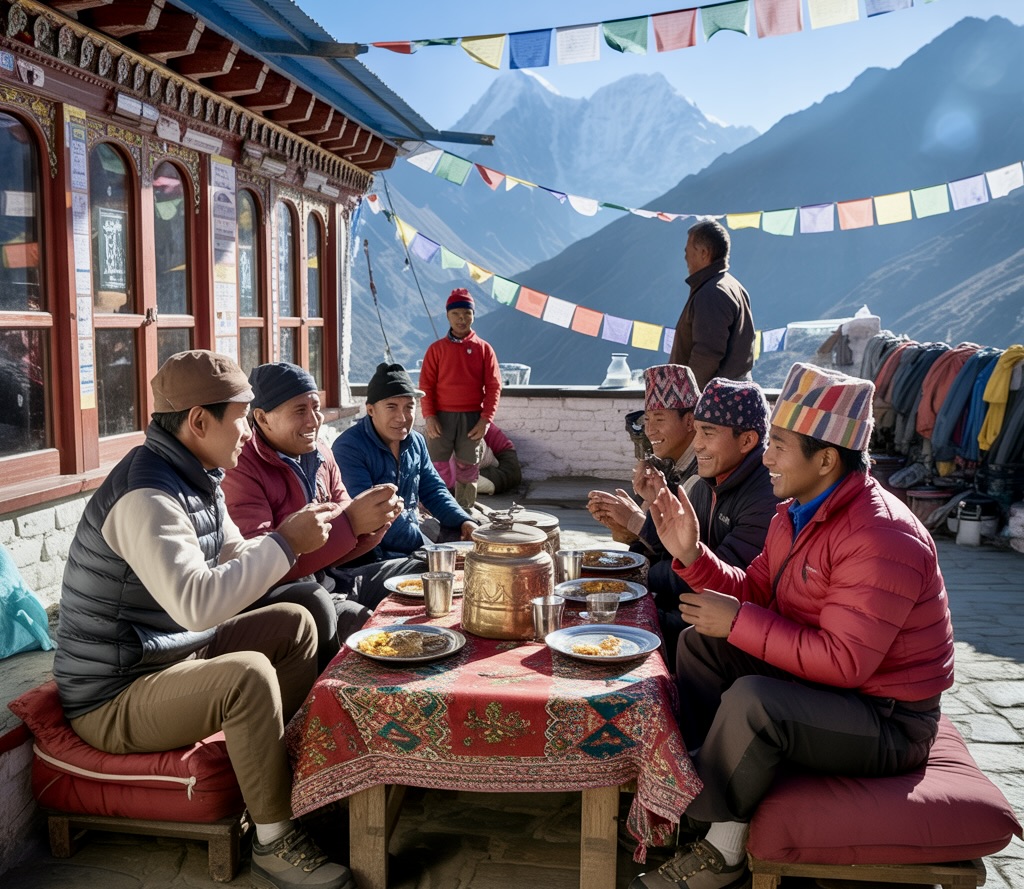
During your 6000m expedition, we make sure you experience authentic Sherpa traditions firsthand. You'll witness colorful prayer flag ceremonies where local Sherpas honor the mountains before climbing. These aren't tourist shows; they're genuine spiritual practices that have protected climbers for generations.
Our climbers often participate in traditional Sherpa meals, sharing butter tea and tsampa (roasted barley flour) with local families. There's nothing quite like bonding with your guides over steaming momos (dumplings) after a hard day's trek.
Mountain Monastery Visits
The Himalayas aren't just home to the world's highest peaks—they shelter ancient Buddhist monasteries that seem to defy gravity on cliffsides.
We arrange visits to these sacred spaces like Tengboche Monastery on the way to many 6000m peaks. The monasteries aren't just photo stops; they're living, breathing centers of Himalayan spirituality. Our climbers often tell us that the monks' chanting sessions provide unexpected mental preparation for the challenges ahead.
Authentic Village Homestays
Want to really understand Nepal? Forget hotels. We arrange homestays in remote mountain villages where you'll sleep in traditional stone houses, help prepare meals on open hearths, and share stories with families who've lived beneath these giants for generations.
In places like Khumjung or Phortse, you'll help with daily chores, learn to cook Nepali staples, and maybe even try your hand at traditional weaving. These connections with local families often become the unexpected highlights of the expedition.
Success Stories and Client Experiences
First-time climbers' journeys
Nothing compares to witnessing first-time climbers transform from nervous beginners to triumphant mountaineers. Over the years, we've guided hundreds of climbing novices to their first 6000m summit in Nepal.
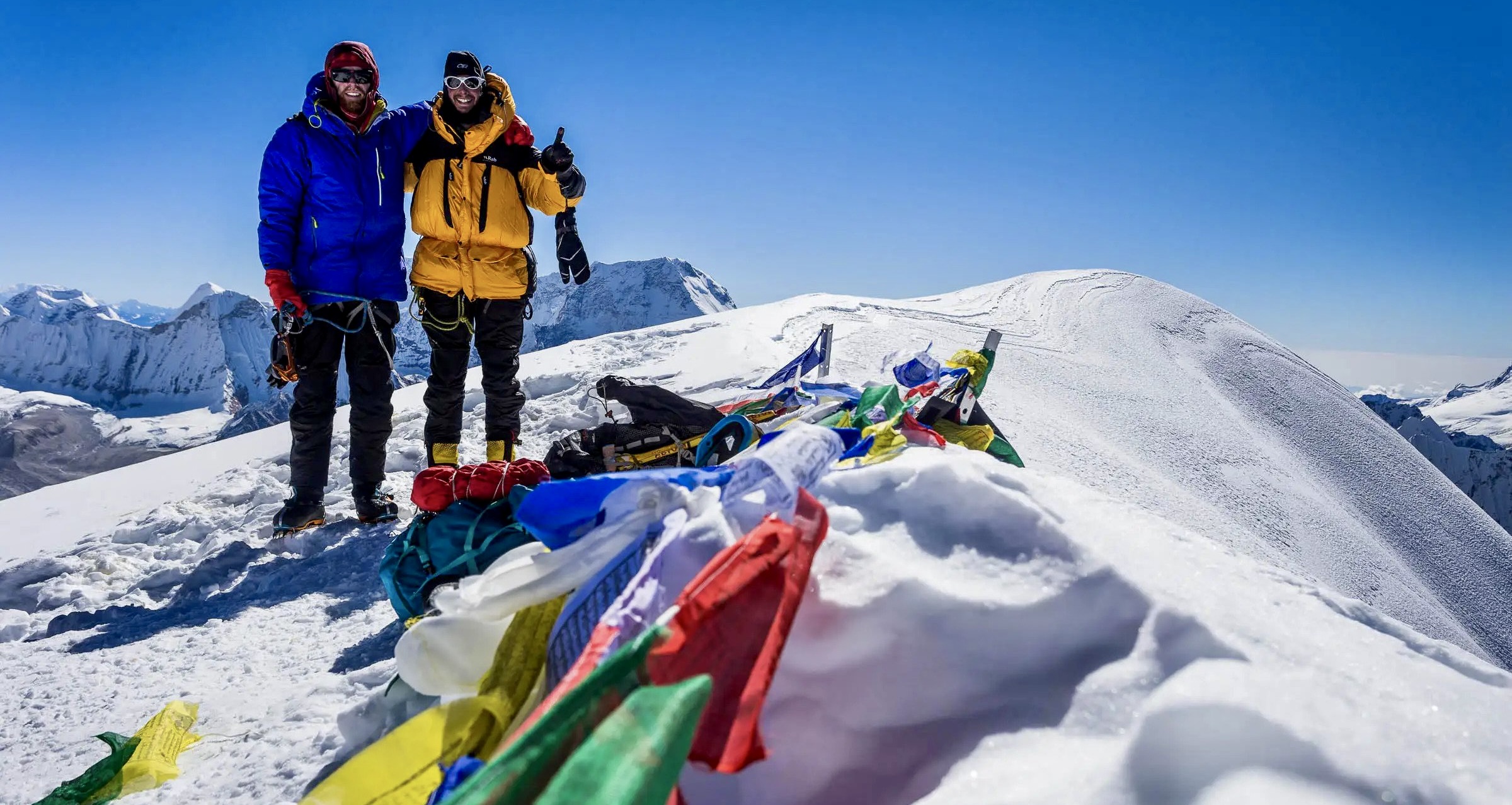
Take Maya from Singapore, who had never climbed anything higher than her apartment staircase. Through our personalized training program, she conquered Mera Peak in 2021. Or David from Canada, who turned 50 and decided a 6000m peak was the perfect midlife celebration - he made it up Chulu East with tears of joy streaming down his face.
What makes these journeys special is the profound personal growth that happens along the way. We see it time and again, day by day, as climbers push beyond their comfort zones, something changes. Their posture straightens. Their eyes light up with newfound confidence.
Testimonials from international mountaineers
"I never thought I'd stand on top of a 6000m peak until I met the Everest Sherpa team. Their patience and expertise made the impossible possible." - Sophia, Australia
"The difference between Everest Sherpa and other companies I've climbed with? They truly care about your experience, not just getting you up and down." - Marco, Italy
"As a woman traveling solo, safety was my biggest concern. These guys became my family for two weeks. I'd trust them with my life again in a heartbeat." - Jasmine, USA
"My summit of Island Peak wasn't just a physical achievement - it was spiritual. The Sherpas' respect for the mountains is contagious." - Raj, India
Photo gallery of summit achievements
Our climbers' summit photos tell stories that words simply can't capture. The exhausted grins. The prayer flags snapped in the wind. The vast Himalayan panoramas stretch to the horizon. Every image in our gallery represents someone's dream come true.
We've collected thousands of these magical moments over the years. Couples embracing at 6000m. Solo travelers with arms raised in triumph. Groups of friends who started as strangers but summited as family.
Behind each photo lie days of effort, early mornings, cold nights, and perseverance. When we look at these images, we don't just see mountains conquered - we see lives forever changed.
Common challenges and how we overcome them
Altitude sickness scares most first-timers, and rightly so. That's why we implement a careful acclimatization schedule, monitor oxygen levels daily, and aren't afraid to recommend extra rest days when needed.
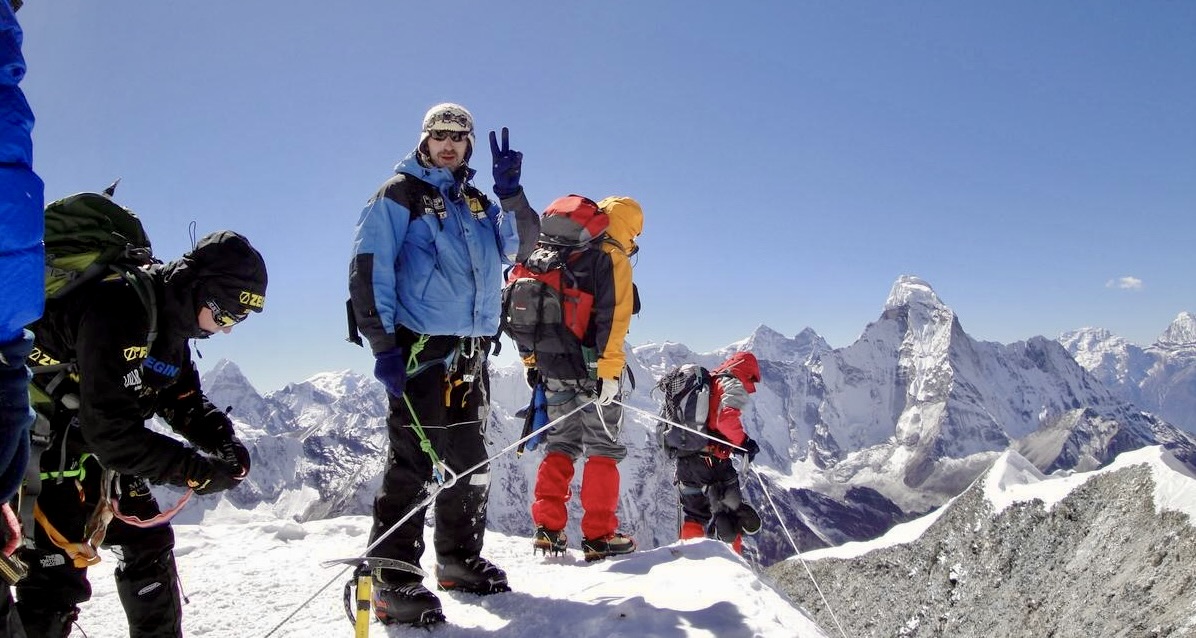
Weather in the Himalayas changes faster than you can say "summit push." Our team keeps constant tabs on forecasts, and we're not shy about waiting for better conditions if safety demands it.
Physical exhaustion hits everyone differently. Our porters lighten loads when necessary, and our kitchen team prepares energy-rich meals that somehow taste amazing even at high camp.
Mental fatigue often proves tougher than physical. Our guides are part coaches, part cheerleaders - they know exactly when to push and when to ease back. We've seen countless climbers push through their "I can't go on" moment with just the right encouragement.
Conquering a 6000m peak in Nepal represents the perfect challenge for climbers looking to advance their mountaineering skills before tackling the world's highest mountains. From the accessible Island Peak to the technically demanding Ama Dablam, Nepal offers diverse climbing experiences across various seasons, each requiring specific preparation and equipment. The cultural richness you'll experience along the way—from traditional Sherpa villages to ancient Buddhist monasteries—adds an invaluable dimension to your expedition.
At Everest Sherpa Expeditions, we pride ourselves on providing comprehensive services that have helped hundreds of climbers successfully summit these magnificent peaks. Our experienced guides, seamless logistics coordination, and attention to proper acclimatization ensure your safety while maximizing your chances of success. When you're ready to transform your mountaineering dreams into reality, our team stands ready to guide you through every step of this life-changing adventure. Contact us today to begin planning your 6000m peak expedition in the breathtaking Himalayas.
If you need any further information, please contact us by email: [email protected], Phone: +977- 980 195 6248 (WhatsApp).

